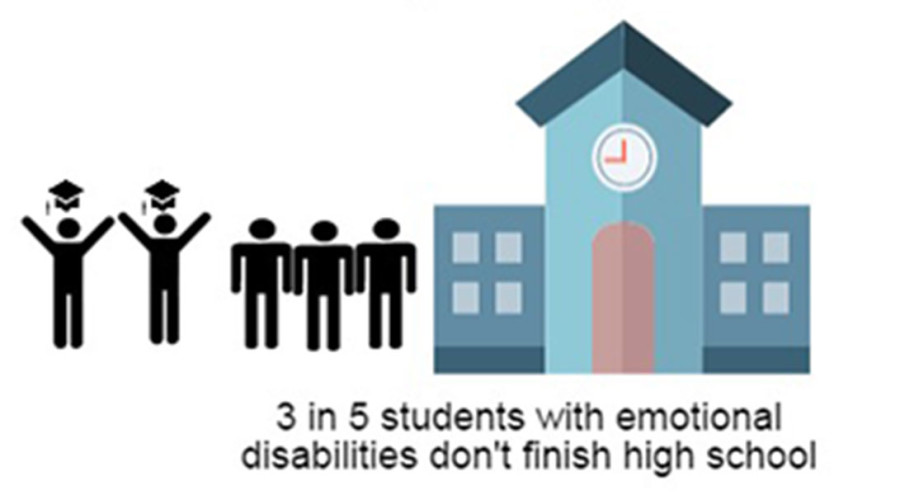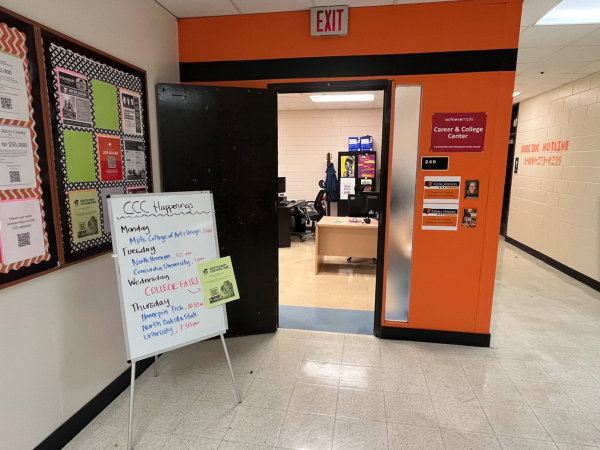Special Education Assistants are beneficial to student’s success
January 30, 2015
“[Special education assistants] are vital to the work we do and we don’t have enough of them. They’re vital to the students for so many reasons,” said special education teacher Jim Barnhill.
Special education assistants, commonly referred to as SEAs, make up a large part of the special education staff at South. There are two main divisions of SEAs; program SEAs who remain mostly in one special education classroom throughout the day, and what are commonly referred to as “one-to-one” SEAs who accompany one or multiple students to their classes throughout the day. Regardless of their environment, their duties tend to be the same – create an environment for students that leads to their overall success.
South’s special education program is split into four different areas. Autism, Life Skills, Physical and Other Health Impairments (POHI) and the Special Education Resource Team (SERT.) Most of the programs have individual classrooms as well as SEAs that are dedicated to each program, and have extended education in that specific area.
“Each SEA has to do a focus of training, that they have to do eighty hours of. At least that’s the way it was when I started working. You do your eighty hours of training, sixty in your core disability, whether that’s autism, POHI or EBD [Emotional and Behavioral Disorders] or anything like that. So my training is in Autism and EBD,” added Londel French, an SEA for the Autism program.
Devon Drosduck is an SEA for the Special Education Resource Team (SERT). As the only SEA for that program he works with around 180 students. It’s not possible to be with that many students all day long, so he splits his time as best he can.
“For me I fluctuate between mainstream classes and the Special Ed classes. . . we’re kind of all throughout the building throughout the day. Schedules are sometimes pretty consistent for the week but they fluctuate depending on the needs. Whether it be testing or making up assignments with students or working on a project or any variety of things,” he said.
I’m kind of going around to the highest need areas of students struggling in a specific class. I’m spread a little more thin whereas a lot of the programs there’s a dozen or so or two dozen SEAs,” added Drosduck.
French, on the other hand, spends the first five hours of his day in an autism classroom, and then goes to a general ed classroom for sixth hour. He is also a bus aide, meaning he rides a special ed bus to and from school each day. Classes in the autism room range from things such as academic support to a class focused on careers and plans for after high school. They also eat lunch in the room during fourth hour.
“It’s more just talking. Getting them to talk about the right stuff. Getting them to think about certain things, and stuff like that,” commented French.
The Autism program also has one-to-one SEAs, such as Andrew Sweetman. “It varies in the different programs, I’m in the autism program so I go to general ed classrooms with our students. There’s like eight different kids that I kind of just pop into the room, I stay for the whole hour sometimes. I help them get their work done, work with groups, and just get the stuff done in class.”
In recent years, it hasn’t been for there to be fewer SEAs than needed to meet the requirements of the special education program. “It’s a simple matter of there are more students here and their needs are greater than the number of people we have to serve them,” commented special education teacher Jim Barnhill.
Minneapolis Public Schools, along with other school districts around the country, receive funding for special education programs through the Individuals with Disabilities Education Act (IDEA.) In 2013 funding for the federal program was cut, including over 9 million dollars from the budget in Minnesota. Consequently, some special education support staff positions were eliminated.
“Right now if I have a student and they really want to take a class and we don’t have the staff to go with them… they have less exposure to history, less exposure to english, less exposure to science, things that they really would like to try to do. They either try it by themselves with no help, or they don’t try it at all,” commented Barnhill. “[SEAs] are vital to the work we do and we don’t have enough of them. They’re vital to the students for so many reasons.”
SEAs also form close relationships with the students they work with. “Special ed teachers do a lot of paperwork and it’s hard for them to have one on one time with that student, so the SEAs are actually the ones that spend a lot of time with those students. They know the students sometimes even better than the teachers would,” said French.
Often times students work with the same SEAs over their time at South too. “Working at a high school is really cool to see students come in as a Freshman or a Sophomore and they can really grow and progress by the time they’re looking at colleges or whatever is after. Being able to work with students is the most rewarding,” said Drosduck.













